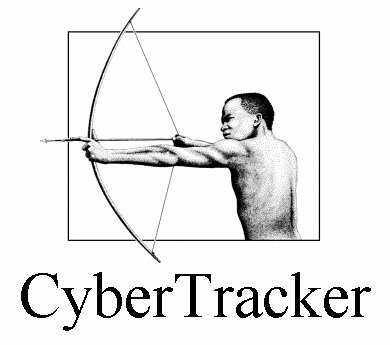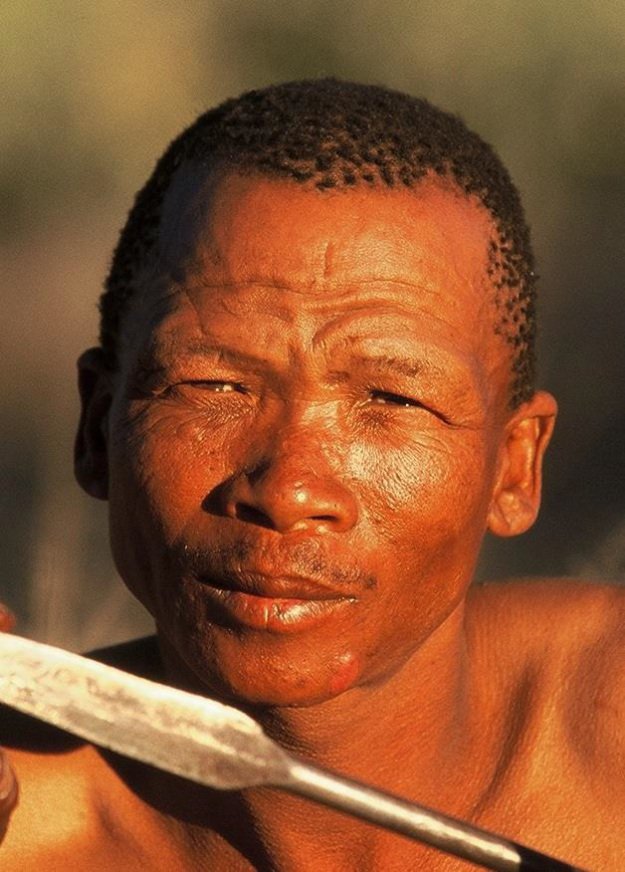How open source technology saved a primitive legacy from extinction
"!Nate asked me to help them. They could no longer live as hunter-gathers and needed jobs. Wildlife in the Kalahari has been decimated by fences that cut off migration routes. It was no longer viable to live as hunter-gatherers. And the art of tracking was dying out. After hundreds of thousands of years, traditional tracking skills may have been lost. Yet tracking can be developed into a new science with far-reaching implications for nature conservation."
-Louis Liebenberg

In 2009 Christopher McDougall wrote a best selling book called Born to Run. It was an instant hit among the endurance running community. The book sought to inspire modern runners with our own primitive origins, an incredible example of human ability, the persistence hunt.
The persistence hunt is considered by most to be the oldest form of hunting. It consists of a human running after its prey until the prey becomes incapable of moving due to exhaustion. The feat is truly incredible of its own accord, even without mentioning the fact that the last known persistence hunters live in the Kalahari, chasing their prey in the mid summer heat of the desert, often times lasting eight hours or more.
If you have never heard of this, it is worth eight minutes of your time to watch this BBC special that follows one of the last people on the planet that carries out this hunt.
But I don't write this to talk about running.
This is about the other, vastly under-appreciated skill that nearly disappeared with humanity's inability to go on living as hunter gatherers as modern civilization dominates the globe. This is about the art of tracking.
The persistence hunt not only demonstrates humanities physical capabilities, but also points to the origins of our intellect.
In his book The Art of Tracking, The Origins of Science Louis Liebenberg makes the case that tracking may be the oldest example of science.
The CyberTracker App
This is a summary of how Loius, along with an African native, !Nate, and a computer scientist, Justin Steventon, saved this dying legacy from extinction using free open source software.
Louis started out studying the way of life of the hunter gatherers in the Kalahari. He became fascinated with how much their culture revolved around the tracks and signs of animals. It was the vast knowledge and impressive ability to interpret their environment that gave Louis the idea to harness these observation skills when the tribes people were being pushed out of their land. He knew that if he could make this skill important in the modern world, he could save this important piece of their culture as well as provide them with a specific niche job opportunities.
In 1996 Louis teamed up with a young computer science student from the University of Capetown to create a PDA app. The program was a simple touch screen PDA application. Due to the fact that the majority of the tracking natives were never taught to read or write, the application consisted of icons that could be selected. A tracker that makes an observation could select the icon for the species then proceed to enter more data and mark the location with GPS. This quickly became a very important source of information for conservation efforts in Africa.
They called the program CyberTracker
Today the application is available for smart phones, you can find the downloads on the organizations website here. It remains available and free to anyone who can make use of it. It is know used for all sorts of ecological data collection and in many citizen science efforts around the world.
Here are some videos about Cyber Tracker
CyberTracker Certifications, spreading tracking knowledge to the rest of the world
Unfortunately, many natives had already moved into the civilized world, leaving behind their ancestral traditions. But this didn't stop some of them from trying to gain employment collect data with cyber tracker.
In order to maintain a level of reliability with the information gatherers as the program evolved and become more widely used. Louis, along with !Nate and others of the tracking community created an evaluation process.
The evaluation process has also played the role of spreading this skill to others around the globe, being not only a test, but also an incredible learning experience.
The results of the evaluation process Are ranked into four levels in two separate categories.
- Track and Sign level 1
- Track and Sign Level 2
- Track and Sign level 3
- Track and Sign Specialist
- Trailing Level 1
- Trailing Level 2
- Trailing Level 3
- Trailing Specialist
Anyone who receives the levels of specialist in both categories is known as a senior tracker.
There is also The level Master Tracker. As Far as I know !Nate is the only person to have ever received this ranking. It is awarded to a senior tracker who has made significant contributions to the tracking community.
!Nate passed away earlier this year, January of 2016

Louis wanted to spread cyber tracker certifications into other parts of the globe. So he visited the U.S. in search of someone to take back to Africa that could become an evaluator and bring the certification program back to the states. After considering John Young, protege of Tom Brown and founder of Wilderness Awareness School in the pacific northwest, Louis met a wildlife biologist named Mark Elbroch, and after seeing his guide Bird Tracks and Sign; a guide to North American species, Louis took him back to Africa. There Mark received senior tracker certification and became an evaluator.
Today cyber tracker certifications continue to gain traction in the U.S. Gaining attention from biologist, wildlife scientist, hunters, and hobbyists alike. There are now several evaluators through out the states and many of the wilderness and survival schools teach tracking and put their students through an evaluation.
Anyone who learns tracking in this community is learning the skill passed directly from thousands of years of ancestral knowledge. It is truly one of the longest and most fascinating lineages of human knowledge.
-Rimann (Riley Hughes) Track and Sign Level 3
Educational resources to learn tracking
Bird Tracks and Sign Mark Elbroch
Mammal Tracks and Sign Mark Elbroch
Behavior of North American Mammals Mark Elbroch
Practical Tracking Louis Liebenberg, Adriaan Lowwe, Mark Elbroch
These are but a few to get you started, there are also books about insect tracks, reptile and amphibian tracks, skulls, and bird feathers.
And here is this.
The Art of Tracking Louis Liebenberg

This is an excellent post. Following you.
deeallen thank you, i just checked out your page, your stuff looks like it's right up my alley. Followed